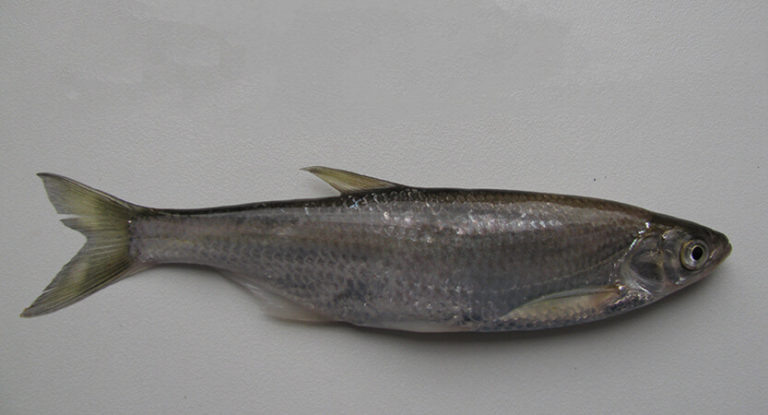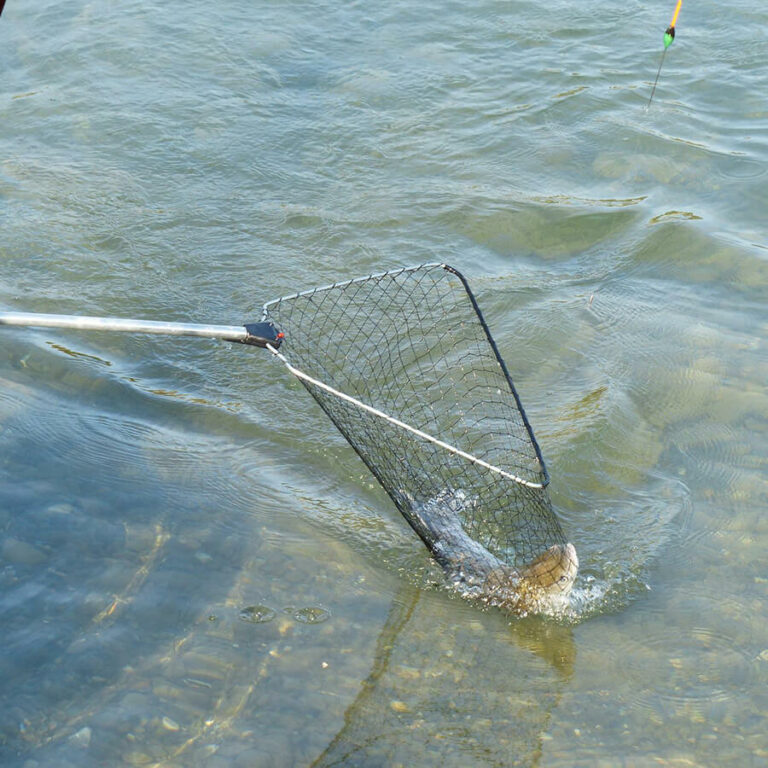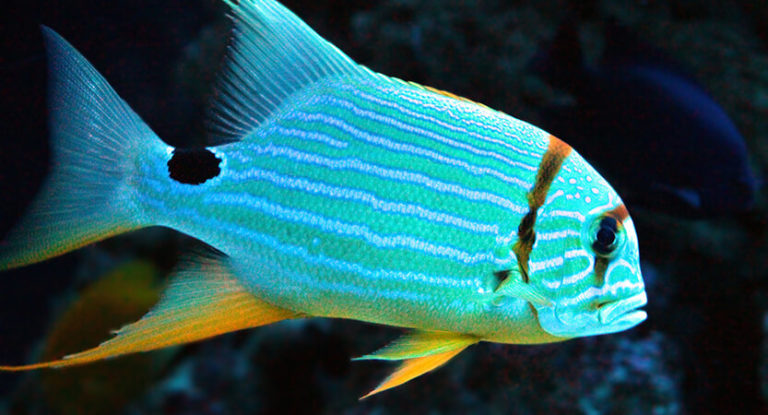Once, high-quality fishing equipment was in short supply – even imported fishing line or hooks were pulled out by pull, overpaying at exorbitant prices. Now it’s enough to just go to a specialized store – and your eyes will run up from the abundance of offers. In this case, the choice of a hook for specific fishing conditions turns into a super task, because even sellers sometimes cannot give intelligible professional advice. You have to rely on the manufacturer’s information and your own knowledge.
Today we set the task – to help you acquire this knowledge in the most simple way possible, bypassing the long path of trial and error. We will show you what these small, but important elements of equipment are, we will help with the selection of options depending on the fishing conditions, fishing method, the type of intended prey and bait. Moreover, we will teach you how to properly store and improve the hooks so that they serve as long as possible. There is nothing more offensive than missing fish due to imperfect rigging, so let’s try to avoid this nuisance!
Here is an overview of the content of this tutorial, feel free to jump to any section you care about:
For more fishing instructions, take a look at these popular Trizily links: Best Underwater Fishing Cameras, Best Fly Fishing Reels.
- How To Tie Fishing Knots
- How To Find A Fishing Spot On A River
- How To Determine The Depth Of A Reservoir
The importance of a right fishing hook
Unfortunately, not all anglers, especially in the early stages, attach due importance to the selection of this small but super important piece of equipment. The basic principle is that it would fit into the mouth of the fish and the bait would not slide off, and the rest is details. However, this is too little for successful fishing!
Take a closer look at the products of fishing tackle manufacturers: you will see that hooks differ in size, shape and even color. You will see a variety of single, double, triple elements, with different forend lengths, with and without barbs, with shoulder blades or rings, all kinds of configurations and colors.
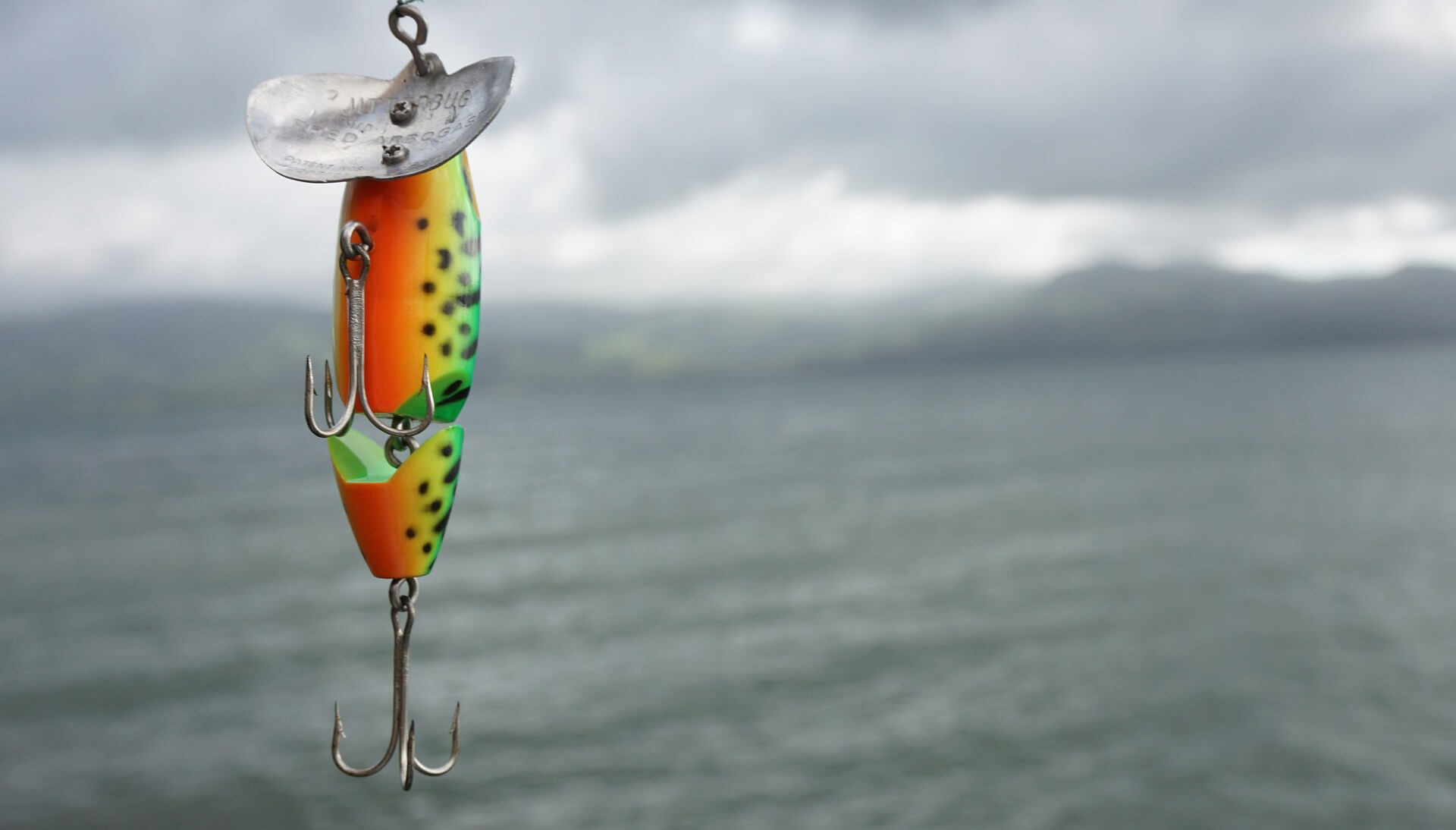
Honest manufacturers indicate the main characteristics of hooks on the original packaging, and they correspond to reality. We will assume that we have really high-quality products made of steel with a reliable coating and good sharpening.
However, the angler must take into account other factors that affect the fishing performance:
- Fish activity . The less active a fish is, the more wary it is about all sorts of unusual things. This means that a large and shiny hook can scare her away from the bait.
- Trophy weight . Naturally, carp and bleak are caught on hooks of different sizes: the miniature version will not withstand the pressure of the giant.
- The type of bait. For vegetable baits, smaller options are usually used than for animals (with the exception of super-delicate bloodworms).
And now let’s talk about the nuances of choosing hooks in as much detail as possible, and in a language understandable to a novice angler.
Fish hook elements
Let’s get acquainted with the main elements that are present in any model:
- Head . In this case, we are talking about the place of attachment to the line. The head can be made both in the form of a loop and in the form of a flat spatula. The first option can be recommended to novice anglers, since it is objectively easier to impose a model with a loop. However, experienced anglers usually prefer options with spatulas – it is believed that the loop frays the line a little faster, and the risk of the ring straightening should not be discounted. There are models where a pronounced head is not provided at all – the fishing line is attached along the groove applied to the forend.
- The forend is a long, straight section extending downward from the head. For animal attachments , options with a long forearm are usually used. This is especially noticeable on live bait hooks.
- Prying off . Curved section after the forend. It can be round, semicircular or angular. In twins and tees (“anchors”) with a common fore-end, there are two or three pods, respectively. Distinguish between “back of the head” and “forehead” underdeva – “forehead” smoothly turns into a sting.
- Sting . The sting consists of the actual tip, designed to pierce the lip of the fish, as well as a barb that holds the bait and prevents the prey from leaving. There are models without barbs, but it is rational to use them only for catching the smallest and weakest specimens. Naturally, the hook should follow immediately after the bite. The tip can be bent to the side, to the side of the forearm, or outward.
Size classification
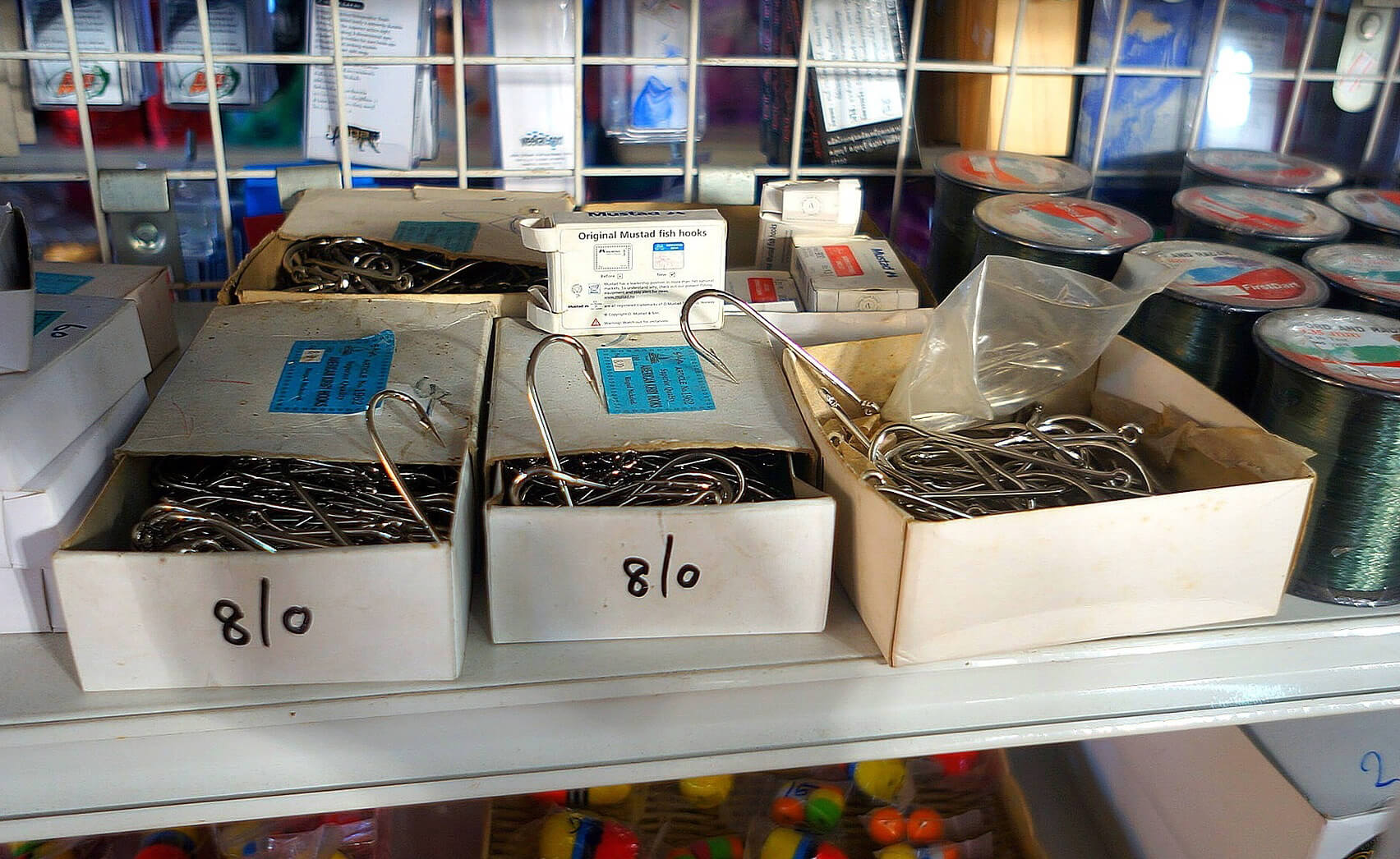
There are two main approaches to the classification of fishhooks: domestic and international. However, such eminent manufacturers of fishing tackle as the Japanese and Finns could not help but contribute to this parameter, which creates even more confusion when choosing a size option.
The most simple and intuitive is the domestic system, which entered the fishing life back in Soviet times. It is based on a basic measurement, the width of the hook from the forend to the tip. It starts at 2 and ends at 16 mm.
More popular in the world is the so-called “Redditch” scale, named after the English town where accessories for aristocratic fly fishing have been produced from time immemorial . The numerical values of this scale are closely related to the size of the bait flies for fly fishing. There is no obvious connection with the metric system. Another nuance: the numbering goes from 24 to 1, and the larger the number, the smaller the hook.
Even more confusion is created when choosing hooks from Japanese and Finnish manufacturers. The Japanese classification is close to the international one: it is also the opposite, with a discrepancy of two units. But the Finns showed even greater ingenuity here: they acted almost like the Japanese, borrowing the system from the British, but with some nuances.
The form
As mentioned above, single, double and triple hooks are distinguished according to the number of underwear. For most tackle and fishing methods, single options of various configurations are used. Doubles and tees are mainly used by lovers of live bait fishing, and also some artificial baits (spinners, wobblers, balancers) are equipped with them. Hunting objects: trophy specimens of humpback perch , pike, catfish – in a word, a large predator.
We draw your attention: the underwear in doubles can be of different sizes, but usually the angle between them is equal to the standard – 120 o . Factory tees ( “anchor”) are always hooking located at the same level under all the same angle 120 about .
Depending on the shape of the underwear and other parameters , hooks are distinguished:
- Rounded . The prying is a regular semicircle. In this group, the classic form “perfect” is very popular. For carp and carp fishing, models with a forend twice as large as the width of the hook are used, and models with an even longer forend are placed on the predator.
- Semi-round . These models have a slightly smoothed “back of the head”. Most of the models of this group (“limerick”, “Italian”) have stings bent to the side, which improves the “grip” of the hook and minimizes the risk of fish coming off. However, for catching small fish, “crystals” are ideal, which do not have such a bend.
- Angular . Angular – this is loudly said, however, the rounded corners on the underside are visible to the naked eye. In this form, predominantly large sizes are produced, intended for catching a large predator.
I would like to say a few words about the widespread offset workers . These models have a zig-zag fold at the top of the forend for secure attachment of silicone lures. They are mainly used by adherents of jig when assembling a variety of spaced rigs. We remind you that in the classic version the hook is a single piece with the jig head.

Materials and colors
An important point when choosing is the material from which the hook is made. The following options are distinguished:
- “Stainless steel” . Stainless steel in an alliance with nickel and chrome is the best material in this segment. It does not corrode and exhibits the highest strength with reasonable flexibility. Rigging elements made from it are used mainly in sea fishing or for catching trophy specimens in fresh water.
- High carbon steel . The most common and fairly democratic material. Its main disadvantage is its weak resistance to corrosion, therefore, products made from it need a protective coating.
- Alloy steel with vanadium . The addition of vanadium to steel increases the strength of the product by about a quarter. A protective coating is also necessary – despite being tough, these hooks will rust. Such options are chosen mainly by carp anglers and hunters for large predators.
The most common and budgetary options for applying a protective coating are bronzing and tinning. The best results are demonstrated by the nickel plating applied by the method of galvanizing, gold-plating and silver-plating demonstrates itself well. However, such products are much more expensive than bronzed ones, so not every angler can afford such a luxury.
In addition to the metallized protective layers, a protective polymer layer can be applied to the hook to provide a matching color scheme. The shiny piece of rig is beautiful and pleasing to the angler’s eye , but cautious fish may not appreciate this aesthetic.
Modern manufacturers produce hooks in a variety of colors (red, blue, black, and so on). It is rational to select them according to the color of the environment or nozzles: for example, red elements are in harmony with an earthworm and bloodworm, blue ones merge with clean water, and black ones are good for silted reservoirs.
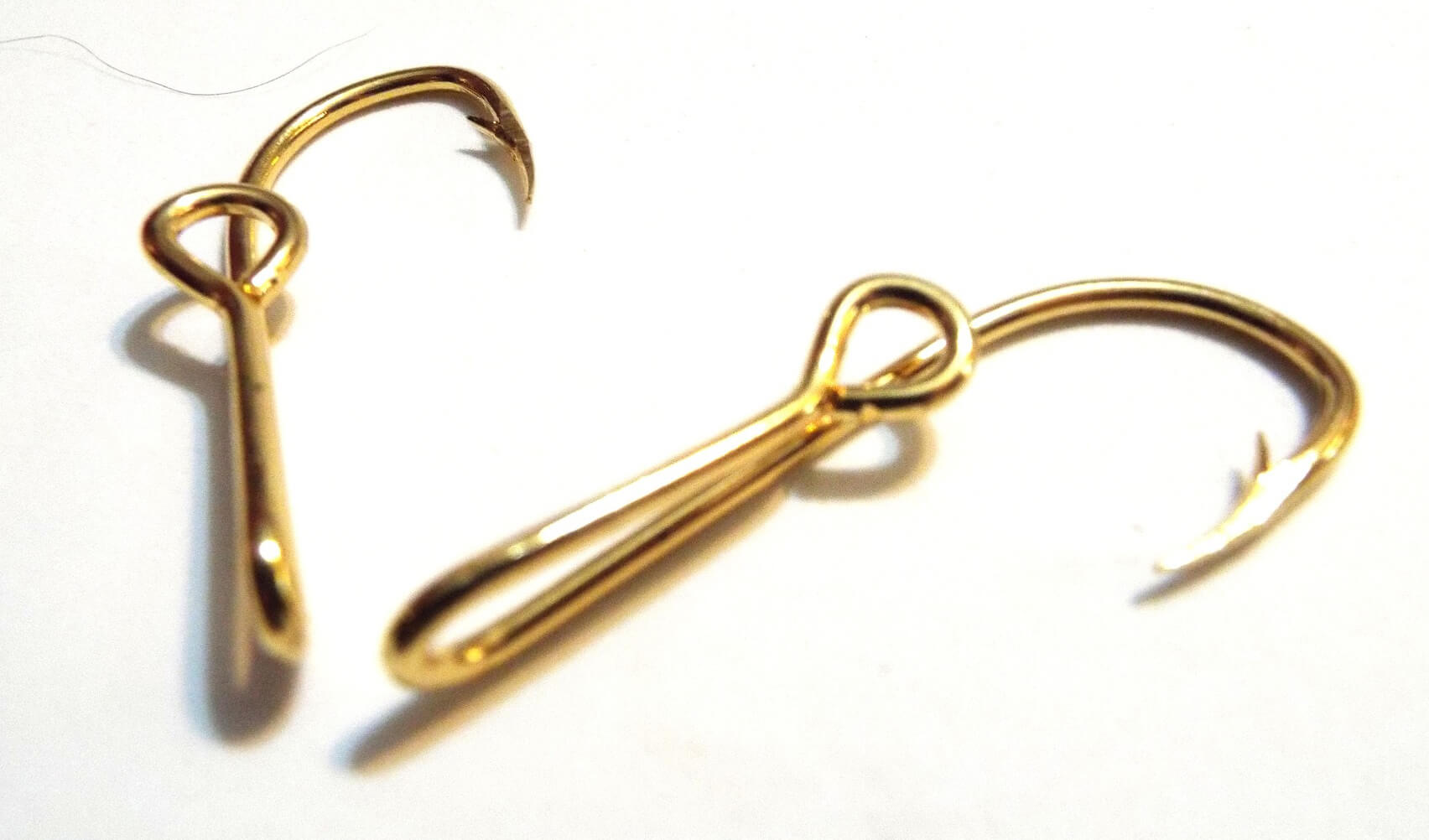
Basic principles for choosing hooks
First, let’s go through the size range in accordance with classification:
- 2.5-3.5 . These are the smallest options, colloquially referred to as “swallows”: large fish simply swallows them along with the bait. They can be used for bleak, perch, char, gudgeon.
- 4-6 . The most versatile hooks for float fishing . They are suitable for catching crucian carp, roach, rudd, herb perch, silver bream, bream.
- 6-10 . They are placed on humpback perch, pike perch, tench, burbot, bream, not too large carp and carp.
- 8-12 . These are hooks for pike, grass carp, large pike perch and asp. Doubles and tees up to # 10 can be used for pike catch .
- 12-16 . Special options for catching catfish, and the presence of a very long forend is critical.
It should be borne in mind that the length of the forend determines the “capacity”. If you want to treat the fish with an earthworm, a bunch of maggots, a tree beetle larva, caddis flies, grasshoppers and other animal food, you should choose the option with a long forearm. It is reasonable to do the same when preparing “sandwiches” such as maggot-corn, barley-pasta, and so on. Worthy of special mention is the favorite fish delicacy – bloodworm. Due to its tenderness, low vitality and small size, an extremely thin version with a sharp sting is selected under the bloodworms.
In addition, you need to take into account the color: it is matched to the color of the bait. This is not very important for catching active fish, but a passive one can alert and even scare away.
Fishing tips
If this is your first time in your life, and there is no experienced angler nearby who can give good advice, it is wise to follow our recommendations:
- Give preference to the Japanese . Kamasan, Gamakatsu, Tiemco (the list goes on) are the most famous Japanese brands, whose products are out of competition. However, fishing products from the Land of the Rising Sun are very expensive, so you can give preference to products from Scandinavian, American and proven domestic manufacturers.
- Check the hooks for sharpness . A blunt point will not be able to pierce the lip of a fish, so check it right away. Swipe it over the nail: if there are no scratches left, there can be no question of any quality of sharpening. By the way, the best options are sharpened chemically.
- Come to the store with samples . If you have already used certain hooks, but have lost the packaging and do not remember the manufacturer, come to the store with samples and select new hooks for them. It’s easier than figuring out the intricacies of markings.
- Store your rig properly . It is best to store the accessories in a separate box, sticking them into polystyrene or foam rubber slightly impregnated with machine oil. In most cases, it is more convenient to take ready-made installations with you on a fishing trip (in the simplest version, hooks with leashes).
- Do not neglect amateur creativity . The angler should at least be able to sharpen and finish the stings with velvet sandpaper and the side of a matchbox. Experienced craftsmen handle hooks in more complex ways: using heat treatment, soldering, chemicals, and so on.
You should not neglect even the smallest nuances when choosing accessories. There is nothing more offensive than a trophy floating away into the distance, taking with it a piece of a hook or even disdaining the most tasty bait due to the incompetence of the fisherman!

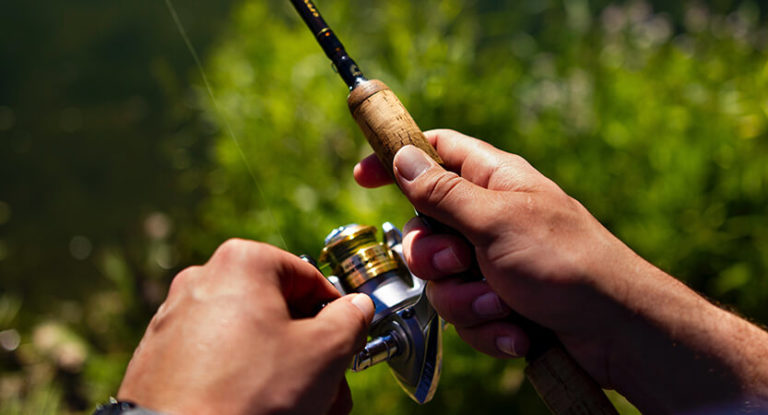
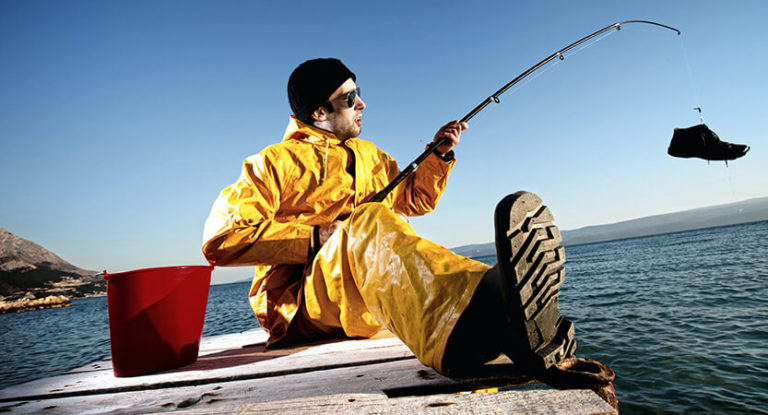
![The 7 Best Spinning Reels in 2023 [Buying Guides] 7 The 7 Best Spinning Reels in 2023 [Buying Guides]](https://trizily.com/wp-content/uploads/2021/12/033-768x415.jpg)
